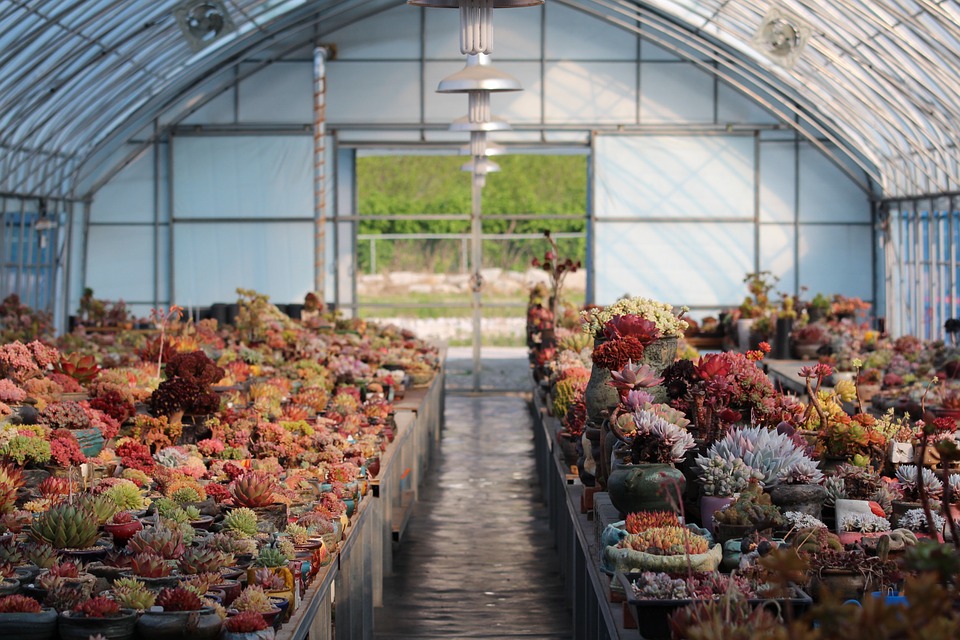How to Grow and Care for Succulents Successfully?
Growing succulents indoors can pose some minor problems. However, with some simple tips below, you’ll be able to take better care of your indoor succulents.

Compared to other houseplants, cute succulents don’t always make the best houseplants. But, that doesn’t mean you shouldn’t grow them!
This article will teach you how to grow vibrant succulents indoors.
What is a succulent?
Succulents are plants with fleshy, thickened leaves or swollen stems that store water, derived from the Latin “succulents,” meaning juice or sap. It can survive on very little water and tolerate drought. So in botanical terms, a succulent is any plant that has evolved to adapt to a hot, arid environment.

Succulents come in many different varieties, spanning several plant families, and most people associate succulents with the cacti family. But remember, all cactuses are succulents, but not all succulents are cactuses. Cactus is a succulent plant in the cacti family that is found only in the Western Hemisphere.
Succulent traits have evolved many times throughout plant history, each time in response to a shift to drier conditions. At the same time, other plants have evolved fleshy traits, such as yucca, agave, and aloe vera.
Start with the right succulents
Not all succulents are suitable for indoor growing. Choosing succulents that prefer shade or low light to full sun will have a significant positive impact on your indoor succulents.

In general, brightly colored succulents such as reds, purples, and oranges do not grow well indoors, and they tend to require some more available light, such as direct sunlight, than indoors.
Therefore, we recommend that you choose natural green succulents.
Make Sure Your Succulents Get Enough Light
Succulents love the sun and need about six hours of sunlight per day, although the exact amount depends on the type of succulent. Young succulents can get hurt in direct sunlight, so we need to gradually introduce them into direct sunlight or use tools to provide them with shade.
Water According to the Season
Succulents need a lot of energy to grow. Succulents grow faster in spring and summer, requiring more water than they do in fall and winter when they grow more slowly. So we recommend testing the soil with a finger — when the topsoil starts to dry out about 1.25 inches, it’s time to start watering.

But it’s important to note that overwatering can also kill succulents, so be sure to watch to see if the soil is starting to dry out before watering.
Plant Succulents in the Right Soil
Ordinary potting soil often contains too much organic material to hold water — which is great for many plants, but not so friendly for succulents. So we should tend to use a mixture of potting soil, sand, and perlites (a white volcanic rock that is highly absorbent and helps with drainage), such as a potted plant made specifically for succulents and cacti. Succulents are believed to grow well in this particular pot.

However, the above is just a simple suggestion, but different types of succulents may have different needs, so the specific planting situation needs to be decided according to the specific type of succulents.
Fertilize Succulents
Succulents don’t need a lot of nutrients to grow, just a small amount during the spring and summer growing seasons, and be careful not to apply too much fertilizer – too much fertilizer can cause succulents to grow too fast and become vulnerable.

In addition, succulents hibernate during the winter and do not need fertilizer.
Avoid Glass Containers
Glass containers are often not a good choice for succulents. They don’t like living in wet soil, so a glass container that doesn’t drain water won’t make your succulents thrive.

Another disadvantage of glass containers is their inability to breathe. Succulents need ventilation to keep their roots healthy and, in turn, their stems and leaves healthy.
Therefore, we recommend that you stay away from glass containers.
Get Rid of Succulent Pests
Succulents are susceptible to aphids, spider mites, and mealybugs, which feed on young, new plants. So during planting, be sure to watch your succulents carefully for signs of pests, and also remember to regularly prune dead, old stems and leaves where pests can live and reproduce.

Aphids tend to be the least aggressive and can be blown away with a few tools — but the radical treatment takes longer and can take several weeks to resolve the aphid problem. In contrast, spider mites and mealybugs can quickly damage succulents. Spider mites are very small red arachnids that feed on tree SAP, which can be blown off with a hose; But mealybugs are aggressive and require careful watering to prevent mealybugs because they are attracted to wet soil.
If you find signs of pests in your succulents, it’s best to isolate them so that other healthy stems and leaves don’t get infected until you can control them.

Have fun
From what I’ve said above, you should be ready to take care of your succulents indoors. Remember that growing succulents isn’t too hard and doesn’t make things too stressful. After all, gardening is supposed to be a fun activity.







